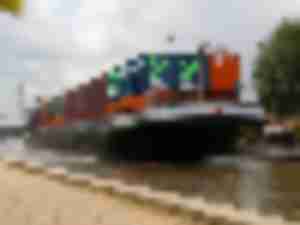PMSA report warns that California ports’ zero emission goals could be limited by grid capacity
On June 9th the Pacific Merchant Shipping Association (PMSA) published a report, prepared by the engineering firm Moffat & Nichol, which raises serious questions about the ability of California’s grid to meet zero emission goals, utilizing increased electricity, as proposed by California ports.
Port of Los Angeles surpasses 10 million containers in 12 months
The Port of Los Angeles has become the first port in the Western Hemisphere to process 10 million container units in a 12-month period on June 10th.
COVID outbreak at South China Port of Yantian could cause shipping disruptions of 2-5 weeks
The disruption of ocean containers stuck at the Port of Yantian in South China due to a COVID-19 outbreak “will cause ripples of potential congestion at the destination with a lag time of some 2-5 weeks,” according to Lars Jensen, CEO of Danish consultancy Vespucci Maritime.
Port of Los Angeles, Toyota and Kenworth partner on hydrogen fuel cell Class 8 trucks
Under the $82.5 million Shore-to-Store (S2S) project, the Port of Los Angeles and more than a dozen public and private sector partners have teamed up for a 12-month demonstration of zero-emission Class 8 trucks and will expand the project to include five more hydrogen-fueled heavy-duty trucks, two battery-electric yard tractors, and two battery-electric forklifts, according to a June 7th Port announcement.
Former Australian Prime Minister Kevin Rudd provides insights on China as the Australia-China trade war rages
China’s rise in the international arena has been meteoric: from a former obscure communist state that was once caught in the web of internal dissent and deep political turmoil, China has risen to become a global political, economic and military heavyweight whose actions and defiance of what is called “rule-based order” cause trepidations among much of the world.
Port of Rotterdam spearheads European renewable energy collaboration
The Port of Rotterdam is spearheading a number of European renewable energy projects that will reduce carbon emissions and energy costs, according to Nico van Dooren, new business director Port of Rotterdam.
Heineken supports Dutch battery-powered container carrier
This summer the Netherlands will see the deployment of a self-propelled container barge utilizing battery power, an undertaking supported by a long-term contract with the Dutch beer maker Heineken.
Biden administration announcement will speed offshore wind in California & new wind port
The Biden Administration announced that the U.S. Departments of Interior and Defense have reached agreement on California sea-space and other issues, clearing the way to move ahead with development of the state’s multi-gigawatt (GW) offshore wind power potential on its Central and North coasts.
Logistics Challenges and Opportunities in a Post Covid-19 Business Environment
This is an Expert Insight that I am submitting on behalf of my client, Mark McCullough, CEO of Gebrüder Weiss USA
Over the past year, businesses have had to redefine their supply chain relationships and reassess their operations to remain operational. The pandemic has proved to be a fierce teacher. How can businesses apply these lessons? In order to create greater resilience, logistics players need to re-evaluate supply chains and their management.
U.S. exporters continue to encounter rough sailing in 2021
Paul Snell, CEO British - American Shipping, warned that the recent consolidation of ocean carriers into now 17 carriers into a smaller number of alliances has been accompanied by downsizing and automation in which carriers “mimic each other” in emphasizing imports over exports and with the unintended effect of “devaluing” U.S exporters.
© Copyright 1999–2025 American Journal of Transportation. All Rights Reserved











